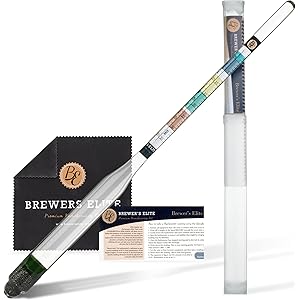What is Amber Ale?
Amber Ale is a style of beer that is characterized by its amber to copper color, which is achieved through the use of caramel malts. This style typically features a balanced flavor profile, combining malt sweetness with a moderate hop bitterness. Amber Ales are often brewed with a variety of hops, which can impart floral, citrus, or pine notes, enhancing the overall complexity of the beer.
History of Amber Ale
The origins of Amber Ale can be traced back to the United States in the late 20th century, where craft brewers began experimenting with different malt and hop combinations. This style gained popularity as part of the craft beer movement, which emphasized quality, flavor, and traditional brewing methods. Over the years, Amber Ale has evolved, with many breweries putting their unique spin on the style, resulting in a diverse range of flavors and aromas.
Ingredients Used in Amber Ale
Amber Ale is primarily made from malted barley, specifically caramel malts, which contribute to its distinctive color and sweetness. Hops are also a crucial ingredient, with varieties such as Cascade, Centennial, and Amarillo commonly used to add bitterness and aroma. Yeast plays a vital role in fermentation, with ale yeast strains typically employed to produce the desired fruity esters and phenolic compounds that enhance the beer’s character.
Tasting Notes of Amber Ale
When tasting Amber Ale, one can expect a rich, malty backbone with flavors of caramel, toffee, and sometimes chocolate. The hop presence varies but generally complements the malt sweetness without overpowering it. The finish is often smooth and slightly dry, making it an approachable beer for both novice and experienced drinkers. The aroma typically features a blend of malt sweetness and hop characteristics, creating an inviting experience.
Food Pairings with Amber Ale
Amber Ale’s balanced flavor profile makes it a versatile beer for food pairings. It pairs well with a variety of dishes, including grilled meats, barbecue, and hearty stews. The malt sweetness can complement spicy foods, while the moderate hop bitterness can cut through rich, fatty dishes. Additionally, Amber Ale works well with cheese, particularly aged cheddar and gouda, enhancing the overall dining experience.
Get more content like this!
Sign up to receive updates and new terms first hand.
Brewing Process of Amber Ale
The brewing process for Amber Ale begins with mashing the malted barley to extract sugars, which are then boiled with hops to create the wort. After boiling, the wort is cooled and transferred to a fermentation vessel, where yeast is added. The fermentation process typically lasts one to two weeks, during which the yeast converts sugars into alcohol and carbon dioxide. After fermentation, the beer is conditioned, filtered, and packaged for distribution.
Variations of Amber Ale
While Amber Ale is a distinct style, there are several variations that brewers have developed over time. Some examples include American Amber Ale, which tends to have a more pronounced hop character, and English Amber Ale, which often features a maltier profile with less hop bitterness. Additionally, some breweries experiment with adding ingredients like fruit or spices, resulting in unique interpretations of the classic Amber Ale style.
Alcohol Content in Amber Ale
The alcohol by volume (ABV) of Amber Ale typically ranges from 4.5% to 6.5%, making it a moderate option for beer drinkers. This range allows for a balance between flavor and drinkability, making Amber Ale suitable for various occasions. Some craft breweries may produce stronger versions, but the traditional Amber Ale remains within this ABV range, appealing to a broad audience.
Popular Amber Ale Brands
Several breweries are well-known for their Amber Ale offerings, each bringing their unique twist to the style. Some popular brands include Fat Tire Amber Ale by New Belgium Brewing, which is celebrated for its balanced flavor, and Alaskan Amber by Alaskan Brewing Co., known for its rich malt profile. These brands, among others, have contributed to the popularity and recognition of Amber Ale in the craft beer community.




